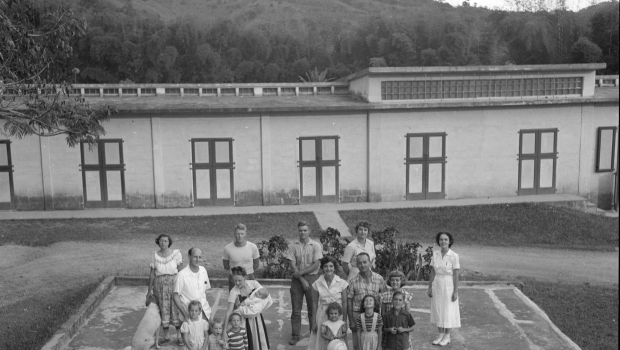Westminster in Watts

In the middle of the twentieth century, Presbyterians rededicated themselves to ministry in America's inner cities. While the ebb tide of suburbanization drew congregants to new neighborhoods, urban churches were urged to tend to the people right next door. For forty years, Presbyterians' work in the Watts neighborhood of Los Angeles centered on the Westminster Neighborhood Association.
In 1955, the Presbytery of Los Angeles’ Church Extension Board began study of its own outreach to neglected Angeleno neighborhoods, establishing an Inner City Committee. Members were careful stewards of the presbytery’s funds, and some balked at the possibility of throwing good money after bad: “It is poor stewardship to waste benevolences in a stagnant situation when a like investment would give larger dividends through the establishment of a new church in a subdivision,” the committee wrote that July, calling for “a brand new approach” in Watts. On October 18, the board voted to ask the presbytery for $12,000 for work in Watts. Dr. and Mrs. John L. Mixon, the committee’s demographic consultants, were tasked with studying new outreach in Watts. In March 1956, Everett L. Perry of the PCUSA Board of National Missions visited the presbytery, extolling its inner city research as a model, and asking for “help in developing a national strategy.”
 Police chasing men, Watts rebellion, 1965. From KIT 345.
Police chasing men, Watts rebellion, 1965. From KIT 345.In 1959, the presbytery funded and organized the Westminster Neighborhood Association, offering, like New York's Labor Temple a half-century earlier, a space for residents of all faiths to converge and organize. Using a two-story storefront donated by a local businessman, Westminster hosted youth clubs and civic organizations, collaborating with non-church groups to address the neighborhood’s impoverishment. When riots swept through Watts in August 1965 after the arrest and beating of a black youth, the Westminster building was the only one on its block unclaimed by fire.
Gayraud S. Wilmore of the United Presbyterian Church in the U.S.A. Commission on Religion and Race visited Watts after the riots. By his account, it was no accident that the Westminster building was spared. Casper Glenn of nearby Bel-Vue Presbyterian Church and Westminster’s Archie Hardwick were “constantly in the streets,” attempting to reason with rioters. The Presbytery released Glenn from his pulpit for two months solely to work on the street.
 Westminster Neighborhood Association classroom with phonics lesson, 1977. From Acc. no. 14-0424.
Westminster Neighborhood Association classroom with phonics lesson, 1977. From Acc. no. 14-0424.Following the rebellion, the Commission on Religion and Race pledged new funds to Westminster, and its mission expanded. Budd Schulberg, writer of On the Waterfront, organized the Watts Writers’ Workshop there; the noted black nationalist Maulana Karenga taught Swahili and African history. Westminster sponsored community trips to the beach, organized a football team, and operated a day care center. E. Grace Payne took over as executive director in 1972, and barnstormed Presbyterian congregations across the country soliciting donations, ultimately bringing in $500,000 for a new headquarters building. New construction began in the 1970s. From 1988 to 1990 the Association spearheaded development of affordable housing in Watts, establishing the 130-unit Westminster Park Plaza, which remains the organization's legacy to the community it served.





















